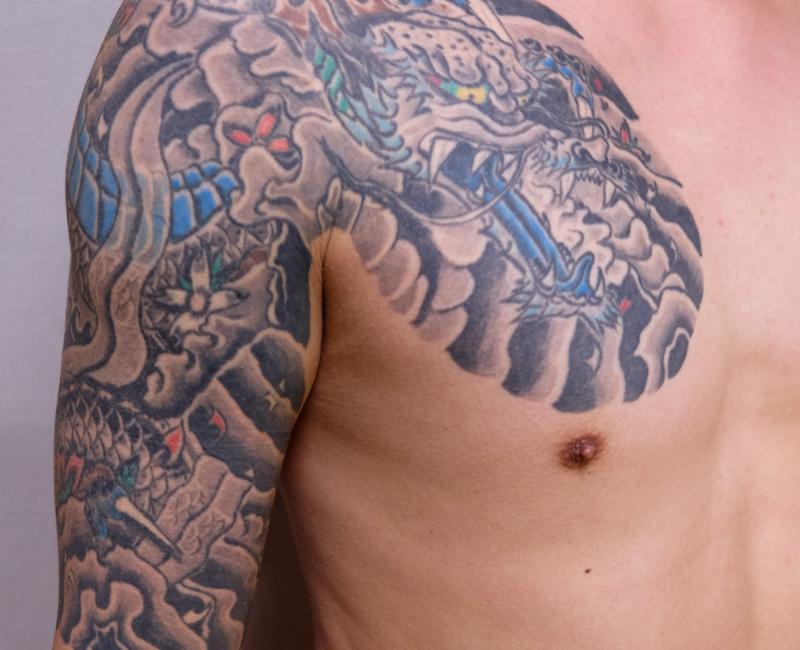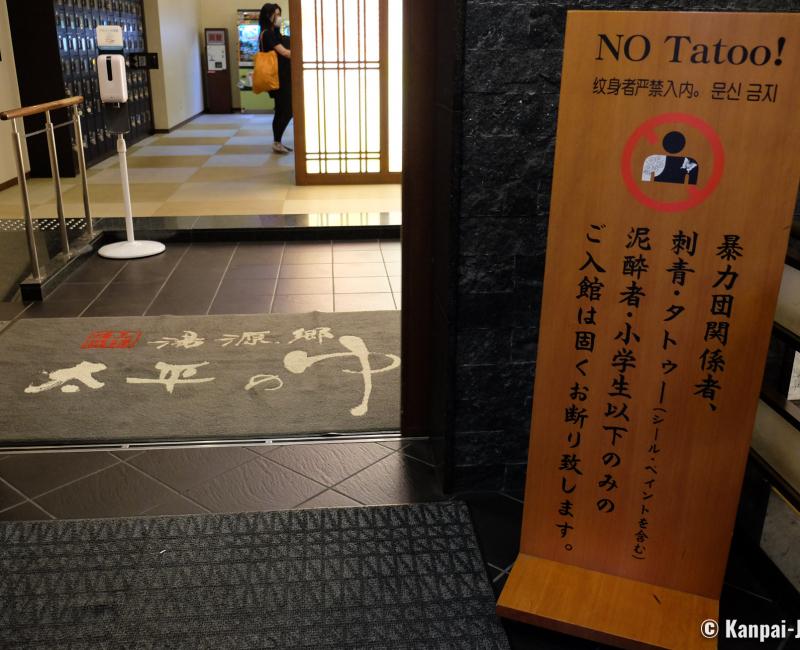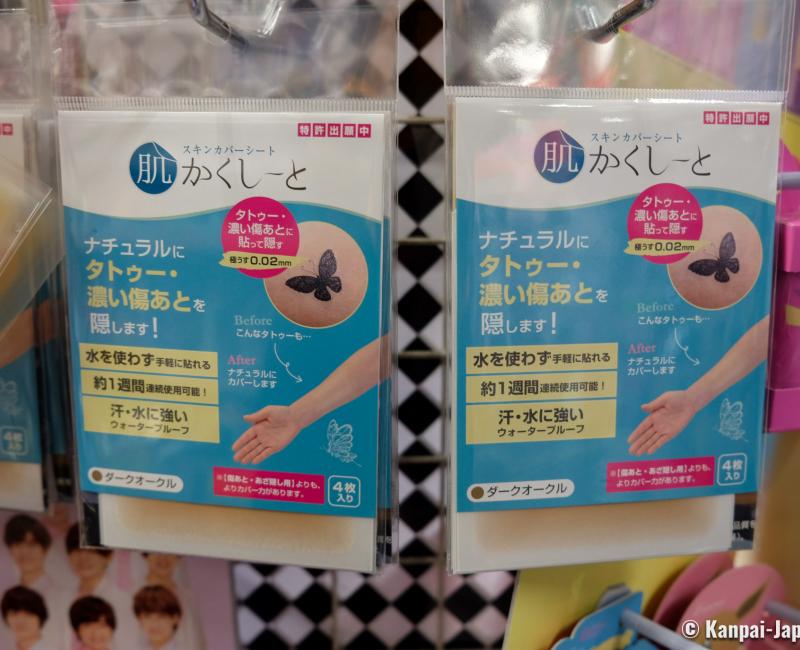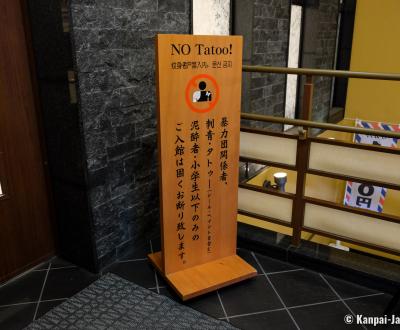Traveling with Tattoos in Japan
A Challenge to the Japanese Hospitality
Japan has been fostering a complex relationship with tattoo, especially since it was long associated with crime and exclusion from society. Nowadays, however, most of the travelers who proudly sport one or more tattoos, and are eager to visit the archipelago, do not imagine they may disturb the omotenashi traditional hospitality, dear to the Japanese hearts.
In 2015, and in view of the organization of great international sports events such as the Rugby World Cup (2019) and the Olympic Games 🏅 (2020 2021), the Japanese government conducted a survey targeting the tourism industry regarding tattoos and how the numerous foreign visitors would be received, especially if they were tattooed. The Ministry of Tourism’s survey found that more than half of the responding establishments, be they hotels 🏨 or ryokan traditional inns, still bore a negative perception of tattooed individuals and refused them, regardless of their origins, on the assumption that they may be related to organized crime.
Tattoo was indeed for several centuries an ignominious mark to publicly brand criminals. The art of tattooing in Japan mainly developed during the Edo period and was widespread in every classes of the society. It was however strictly banned during Meiji era and until 1948. The golden age of yakuza movies in the 1960-70s, in which tattooed bodies were largely shown, certainly contributed to the association of tattoos with the mafia in the public’s mind (even though nowadays yakuza tend to avoid distinctive marks such as tattoos).
Inked tourists may therefore be taken aback by the strong persistence of this prejudice, whereas they think of their tattoos as an artistic feat, a personal choice or a tradition.
Is tattoo illegal in Japan?
Having a tattoo is not illegal per se in Japan. However, tattoo artists tend to work under-the-radar as their job, as every occupation involving needles are legally subject to owning a medical degree. The tables are turning however, since in September 2020, the Supreme Court of Japan ruled in favor of a tattoo artist who was prosecuted for illegal practice of medicine.
As a consequence, very few tattoo parlors have a noticeable storefront, and working tattoo artists (aside mafia) have a long waiting list, sometimes of several years. Those who want to have their body inked in Japan should take this information into consideration! After finding your ideal tattoo artist on the social networks or thanks to a search engine, it is necessary to contact them long enough before the trip to be able elaborate the project and evaluate the number of appointments required, or even if the project is doable during your trip. Some criterias are indeed incompressible, such as the tattoo artist’s availability, or the healing time, etc.
In any case, it is very unlikely to get a last minute appointment once in Japan. The fact is that language can also be a hurdle, as many artists do not necessarily master the English language. However, a professional Japanese-speaking guide might help you book an appointment, and even quickly find one depending on their network.

How do Japanese people react to a tattoo?
Generally, and based on most of the testimonials, tattooed foreign tourists are often warmly welcomed, and they attract curiosity, but rarely disapproval.
On the contrary, a tattooed Japanese person will easily face criticism. As a matter of fact, it is more difficult to find a job in Japan when tattooed, especially in big corporations or in the administration. The mayor of Osaka even stole the spotlights in 2012 when he threatened the city’s tattooed employees: he urged them to have their tattoo erased or to find another job.
However, the acceptance of an inked body may vary, and one must always bear in mind that a Japanese person may be uncomfortable, or feel strong unease before a tattoo, for very deeply rooted cultural reasons. Japanese customers in onsen ♨️ do not think twice when they find that one of the other customers is inked and go complain to the establishment. The size of the tattoo, its location as well as its design are various factors to take into account for its acceptability.
Depending on the place, people’s reaction will vary:
- In the street or in public spaces: there is no problem in general. Tattoos can even be admired, depending on the situation.
- At temples and shrines: there is no specific ban, but in the same manner as a proper attire is required for the visit, it is possible that the covering of visible ink is asked.
- In sento public bath: the rules may vary according to the establishment, but they are usually welcoming with tattooed persons.
- At the beach 🏖: tattoos are not necessarily forbidden, but they must often be covered.
- At the onsen: tattooed individuals are frequently denied entry. A few onsen permit admission as long as tattoos can be covered.
- At the ryokan’s baths: the same as the onsen, if the baths are shared, tattooed individuals are denied most of the time.
- At the swimming-pool / aquatic park: most of the times visible tattoos are strictly forbidden.
- At the gym: the same. However, smaller gyms or neighborhood gyms may be more forgiving than the largest ones.
When tattoos are forbidden, it is usually clearly advertised with signs stating 入れ墨禁止 (irezumi kinshi, "No tattoo") and negotiation is useless.

How to travel comfortably with tattoos in Japan?
"When in Rome, do as the Romans do": if a foreign appearance often helps slipping through many Japanese social rules, it will not help regarding tattoos. The language gap and cultural habits may provoke at the very least uncomfortable moments, or at worst very unpleasant or offensive situations. In Japan, the rule comes first!
Take the lead to make sure your inked travel in Japan is planned in the best conditions:
- Ask / Check if tattoos are allowed and within which limits when booking a ryokan, or at the entrance of onsen, sento and aquatic parks.
- Book private baths when shared baths do not allow tattoos.
- Choose the low attendance hours for the bath, gyms and pools that allow tattoos. Some places even offer such specific arrangements.
- Bring items to cover the inked parts: clothes, scarf, towel, bandage, wetsuit, etc. for the baths, the beach, sport, aquatic parks and even for visiting traditional places. It is quite easy to find "arm covers", a kind of arm socks whose initial purpose is to protect from the UV radiations, but they can hide a tattoo all the same.
- If possible and depending on the circumstances, hide the tattoo before being asked, to adjust to the thoughtful and respectful approach that the Japanese call 思い遣り omoiyari.
One must also accept being turned back from a place because of a tattoo and leave without making a scene or trying to negotiate. It is certainly unpleasant, and even absurd from our travelers’ point of view, but it is the way Japan works. It is also an experience of the cultural difference and part of the trip.
How to recognize tattoo-friendly places?
To spot more easily onsen, sento and ryokan that do not refuse inked customers, some websites and apps are available:
- Tattoo Friendly, in English and in Japanese. The Website also displays a list of tattoo parlors in Japan.
- Tattoo Spot, in Japanese.
However, these sites are not necessarily updated so in any case, it is safer to check directly with the place you want to visit to avoid any disappointment. Some places, such as in Kusatsu, can directly state if they are "tattoo-friendly" or if they accept "body art", as long as it is not related to gangs.
Note that some touristic attractions strictly forbid any kind of tattoo, be it temporary (decal, henna), permanent or traditional (for example Maori tattoos). Visible tattoos are forbidden in:
- Yomiuriland’s swimming pool,
- The Aquatic Park in Hamana-ko Pal Pal,
- Oedo Onsen Monogatari in Tokyo (that will definitely close down on 2021, September 5), and more surprisingly,
- Tokyo Dome’s Spa LaQua!
And you’d better not trying to cheat, as if the tattoo is not completely covered by the swimsuit or the attire required by the establishment, you will be expelled from the facility without refunding of the admission fee!
That is why it is important to carefully plan the visits, either by booking baths / private places to avoid speaking of one’s tattoos, or in selecting the places where they are allowed.
How to ask if tattoos are allowed?
To ask if tattoos are allowed, say :
- Tattoo wa daijobu desu ka? (タトゥーは大丈夫ですか)
If they are not allowed the answer will be:
- O kotowari desu (お断りです) or O kotowari itashimasu (お断りいたします),
- Dame desu (ダメです).
If they are allowed:
- OK (okkei) desu (オッケーです),
- Daijobu desu (大丈夫です).
If you are asked to cover the tattoo:
- Tattoo wo kakushite kudasai (タトゥーを隠してください "Please cover your tattoo"),
- Tattoo kabaa shiiru wo tsukatte kudasai (タトゥーカバーシールを使ってください "Please use a Tattoo Cover Seal to cover your tattoo").
A Tattoo Cover Seal, (also called foundation tape, hada kakushiito, skin cover sheet) is a kind of bandage that looks like a second skin, made of a skin colored, waterproof material that can cover small size tattoos. It is quite easy to purchase from most of online shops, at affordable prices (on average ¥1,000 for 4 patches). The skin tones are however limited.
We recommend ordering your covering patches before going to Japan, as it can be difficult or time consuming to find such items when in the country. They are sold by large chains such as Don Quijote (Donki), but not all the stores have skin cover sheets in stock. You can supply at stores specialized in cosplay items (such as Animate) provided you find one on your sightseeing itinerary.

Vocabulary
In Japanese, several words are used to say "tattoo". Irezumi (入れ墨) and horimono (彫り物) are frequently used and usually refer to a traditional Japanese design tattoo. The English word "tattoo" (タトゥー) tends to encompass all the other tattoos styles.
The traditional Japanese tattoo has also several naming for the ink depending on the body part it covers. A few examples:

